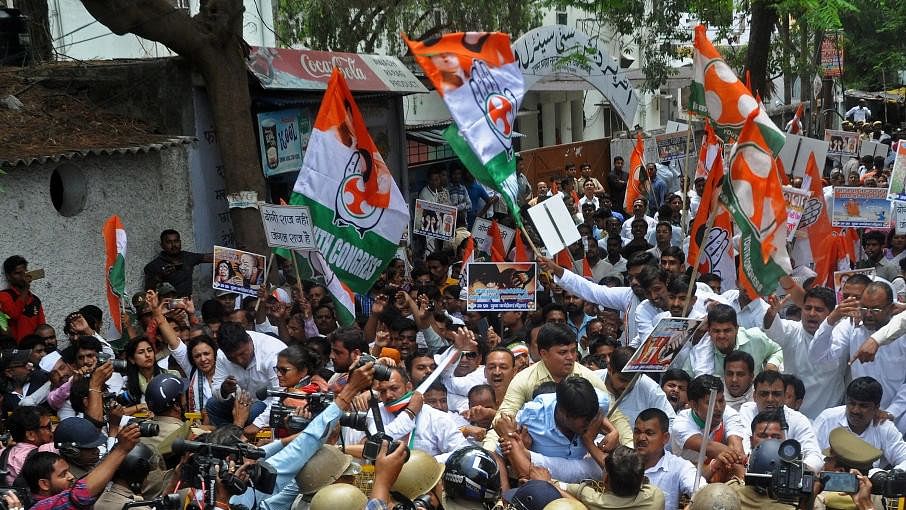
Is there a discernible reason as to why political parties have remained devoid of constitutional recognition all these years?
Credit: Reuters Photo
As India approaches its eighteenth general election in mid-2024, political parties are gearing up for a crucial and highly contested battle for power. The survival of India’s democracy hinges on key political factors influenced by the actions of political actors. Political parties form one such prominent and influential political actor in India, along with voters and individual candidates.
The existence and influence of parties were implicit in the nature of the democratic government adopted by India. With six recognised national parties and 54 recognised state parties, India's representative governance relies on the institution of the political party. Notably, the Constitution lacked any mention of political parties until 1985. The Tenth Schedule, or the anti-defection law, was incorporated into the Constitution in 1985 as a response to the rise in political defections among elected legislators. It provides for the disqualification of legislators who either voluntarily give up membership of their party or vote in the house of a legislature against the party’s direction. Interestingly, this was the first time an institution as significant as the political party made an appearance in the Constitution of India.
Is there a discernible reason as to why political parties have remained devoid of constitutional recognition all these years? One plausible reason could be the existence of only a few political parties as well as the clear dominance of the Indian National Congress (INC) during the early years of independent India. For decades, the INC held a firm grip on India’s electoral landscape, establishing a dominant one-party rule that spanned across the pre-independence years until 1967.
Although the insertion of the Tenth Schedule marked the recognition of political parties within the Constitution, it is an indirect and incidental recognition granted only for the purpose of implementing the anti-defection law. Strictly speaking, the mention of parties under the Tenth Schedule was incidental to regulating unprincipled floor-crossing. The Tenth Schedule contains no reference to any other aspect of the workings of political parties.
Outside of the Constitution as well, political parties have largely remained unregulated by statutes. Before the Tenth Schedule, electoral laws in India governed political parties only at the pre-electoral stage. The Representation of the People Act, 1951 (RP Act, 1951) and the Election Symbols (Reservation and Allotment) Order, 1968, regulate party recognition and electoral symbol allocation. The RP Act 1951, the primary statute governing the conduct of elections, is meant to regulate only individual candidates and not political parties. Parliamentary debates preceding the enactment of the RP Act, 1951, its Statement of Objects and Reasons, as well as its provisions, clarify this. The lack of statutory regulation of political parties is evident.
But do political parties need regulation? As mentioned earlier, voters, electoral candidates, and political parties are the three pivotal actors in India’s representative democracy. They are intricately tied in a tripartite relationship where voters vote for candidates, most of whom are fielded by a political party. At the culmination of an election, a party (or a coalition of parties) forms a government. Political parties enjoy direct and simultaneous access to the people as well as the government. Parties employ their relations at both ends to prepare election manifestos that reflect the policies the future government will introduce if the party is voted to power. Thus, the actions and policies of the government largely aim to implement the party’s election promises.
It should not be an exaggeration to say that parties play a crucial role in democratic governance in India. However, most parties in India function under an autocratic and undemocratic internal structure. In the absence of a statutory mandate to this effect, party constitutions remain unenforceable. The decisions of the high command act as a fiat for the members, and anyone who goes against them is punished. Unlike mature democracies where party leadership is decided through open and vigorous elections, intra-party elections are a farce in India. Several parties, such as the Shiv Sena, the Nationalist Congress Party (NCP), and INC, have seen little internal democracy. For instance, after successive defeats in the Lok Sabha (2019) and Delhi (2020), Kerala (2021), Assam (2021), Puducherry (2021), and West Bengal (2021) assembly elections, the INC decided to conduct a formal intra-party election in 2022. After being led by the Nehru-Gandhi family for over 24 years, Mallikarjun Kharge was elected president of the Congress in 2022.
In the absence of periodic elections, power stays in the hands of a few, much to the peril of equal political participation. Additionally, it affects the representative character of democracy and affects policy decisions that decide the future of millions. Moreover, holding the political party accountable for its actions and ensuring transparency in party funding have emerged as significant and persistent concerns.
The issue before India today is not whether or not there is a need to reform the electoral system and regulate the institution of political parties, but how best to do it. The National Commission to Review the Working of the Constitution (2002) has emphasised that electoral reforms can be effective only with reforms in the political party system. Perhaps, then, the best way to start should be by establishing certain constitutional principles that guide the working of political parties. These principles should be accompanied by specific legislation that outlines specific practices. By doing so, we can foster a more transparent and accountable political landscape.
(The writer is the Milon K Banerji Fellow at the Vidhi Centre for Legal Policy and works with Charkha)